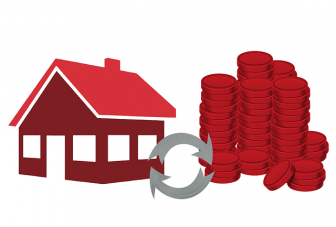 A record proportion of homes have been purchased chain-free so far this year, fuelled in part by an increase in the share of homes bought by first-time buyers and investors, according to Hamptons.
A record proportion of homes have been purchased chain-free so far this year, fuelled in part by an increase in the share of homes bought by first-time buyers and investors, according to Hamptons.
So far in 2022, 73% of all buyers have been chain-free, up from 69% in 2021 and a low of 65% in 2010, the research shows.
Selling to a chain-free buyer has long been the preferred option for sellers looking to speed up a sale and reduce the chances of it falling through. But the lack of stock has amplified the advantage chain-free buyers hold as chains become increasingly slow moving.
Movers have found it harder to line up their next purchase given there were a third fewer homes available to buy in Q1 2022 compared to Q1 2019, Hamptons said.
This means sellers are more likely to choose a chain-free buyer than ever before. So far this year 61% of sellers accepted an offer from a chain-free buyer over a buyer with a home to sell, up from 59% in 2021 and 58% pre-Covid in 2019.
Four in five – 80% – of sellers accepted an offer from a chain-free buyer where they matched an offer from somebody who had a property to sell, up from just three in five in 2016 – 60%. On average, sellers accepted an offer of 2.5% less from a chain-free buyer as a means of smoothing a sale through.
So far this month it has taken the average chain-free buyer 91 days to exchange after having an offer accepted, 20 days quicker than a buyer who had a property to sell. This marked the biggest time to exchange gap between chain and chain-free buyers since our records began in 2009.
So far this year, first-time buyers have purchased a record 26% of homes in Great Britain, up from a previous high of 24% in 2021. Investors made up 14% of buyers, up from 12% in 2021, while second home buyers stayed flat at 2%.
While the majority of movers have been chain-free since 2021, often moving into rented accommodation temporarily in order to break the chain, there has been a large fall in the number of sales to owner-occupiers with a home to sell.
The share of homes bought by someone selling their main residence and buying another home fell from 30% in 2021 to 27% so far in 2022, an all-time low. This has put downward pressure on the number of sales dependant on a chain.
In particular, there’s been a notable fall in owner-occupiers, typically downsizers, needing to sell their home before a cash purchase. Cash buying owner-occupiers made up 19% of buyers so far this year, down from 22% in 2021 and 24% in 2020.
The only regions where chain-free sales became more scarce over the last year were the slowest markets in Great Britain, namely London and the North East. Here, vendors tend to have fewer offers on the table to choose from. In London, the proportion of chain-free buyers fell marginally from 79% in 2021 to 78% in 2022. While in the North East, 71% of purchases in 2022 were chain-free, down from 72% in 2021.
All other regions saw an increase in chain-free sales. Faster markets tend to discourage sellers from choosing a buyer who has a home to sell when it’s likely they’ll also have an offer from a chain-free buyer too. The West Midlands had the highest proportion of chain-free buyers at 80% so far in 2022, up from 78% in 2021.
Aneisha Beveridge, head of research at Hamptons, said: “The current pace of the market has put buyers with a home to sell at the back of the queue. In a fast-paced market such as today, over three-quarters of sellers had multiple offers on the table to choose from. And given chain-free buyers tend to complete quicker and sales are less likely to fall through, they are fast becoming the preferred option for sellers.
“However, chains serve an important role in the market, helping people move up and down the housing ladder. And it’s second and third steppers alongside downsizers who rely on the capital raised from the sale of their home for their next purchase who are finding it particularly tough. This is also exacerbating the lack of stock given their homes are increasingly being bought by first-time buyers and investors who do not have a property to sell.
“Roughly speaking, for every ten tomes sold so far in 2022 only three of those buyers will bring a home onto the market to sell, creating a chain.”


You would rather imagine that as consequence of such a high percentage of chain free sales. We would see accelerated transaction times. But alas no. The conveyance process continues at dead slow and stop. The sales regression team continue unabated.
You must be logged in to like or dislike this comments.
Click to login
Don't have an account? Click here to register
Starter node – to stopper node; single link chains are like 4 leaf clover. Suspect this is referring to agents agreeing sales to no chain below in preference to chain dependent but them that’s what’s causing the stall and delay. Its the inability to find an end of chain that’s the issue.
End of chain, when properties are being retained by estates, kept to let, short or holiday let, or when new builds are being snuffled up by investors or are built to rent is what is causing the delays
You must be logged in to like or dislike this comments.
Click to login
Don't have an account? Click here to register